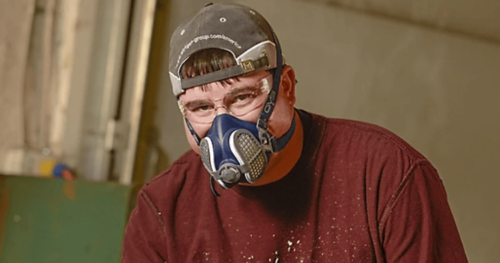A respirator is an indispensable tool for tasks involving airborne particles, hazardous vapors from chemicals, or work in dusty environments. To ensure your safety and comfort during such projects, it’s crucial to select the appropriate respirator. Here’s a guide to help you make the right choice.
When Do You Need a Respirator?
Respirators become essential in situations where there is a potential risk of inhaling harmful substances. While certain respirators, like those utilized in firefighting, provide clean air from an external source, air-purifying respirators are crucial for specific do-it-yourself (DIY) activities. These activities include sanding, painting, grinding, cutting, and working with insulation or drywall. Air-purifying respirators, whether disposable masks or reusable masks equipped with disposable cartridges or filters, play a vital role in filtering and purifying particles, gases, or vapors from the air as you breathe during these tasks.
Choosing equipment requires a balance between providing adequate protection and ensuring comfort. Comfortable devices increase the likelihood of consistent use.
Particulate Respirators:
Particulate air-purifying respirators focus on removing particles such as mist or dust from the air. These are typically lightweight face masks, some featuring a metal bar for a better nose fit. Classified with a letter and a number (e.g., N95), the letter denotes resistance to oils (N: not resistant, R: somewhat resistant, P: strongly resistant), while the number indicates particle removal effectiveness (95: 95%, 99: 99%, 100: 99.97%). Particulate respirators are disposable, and damaged or difficult-to-breathe-through ones should be replaced promptly.
Gas/Vapor Respirators:
Gas/vapor air-purifying respirators use cartridges that attach to a reusable partial- or full-face mask. Cartridges, designed for specific gases or vapors, must match the hazard for effective protection. Common color codes include:
- Black: Organic vapors
- White: Acid gases
- Yellow: Organic vapor and acid gases
- Green: Ammonia gas
There are additional color codes for other hazards, including colors for particulate filters designed for use with gas/vapor respirators.
While the mask portion is usually reusable, it has a limited lifespan. Regular checks for wear or damage, adherence to expiration dates, and periodic cartridge replacement are essential.
Shop Respirators >



